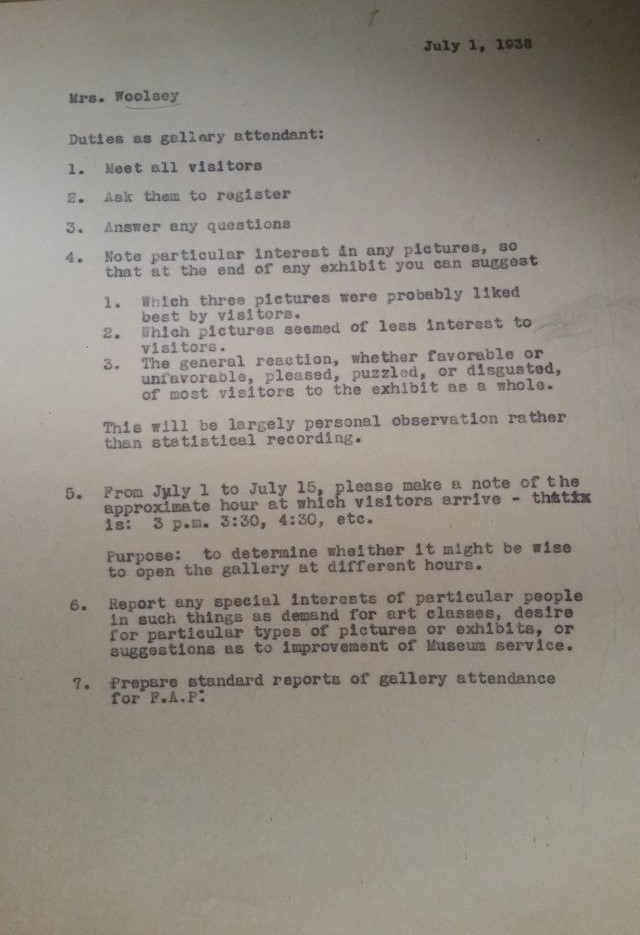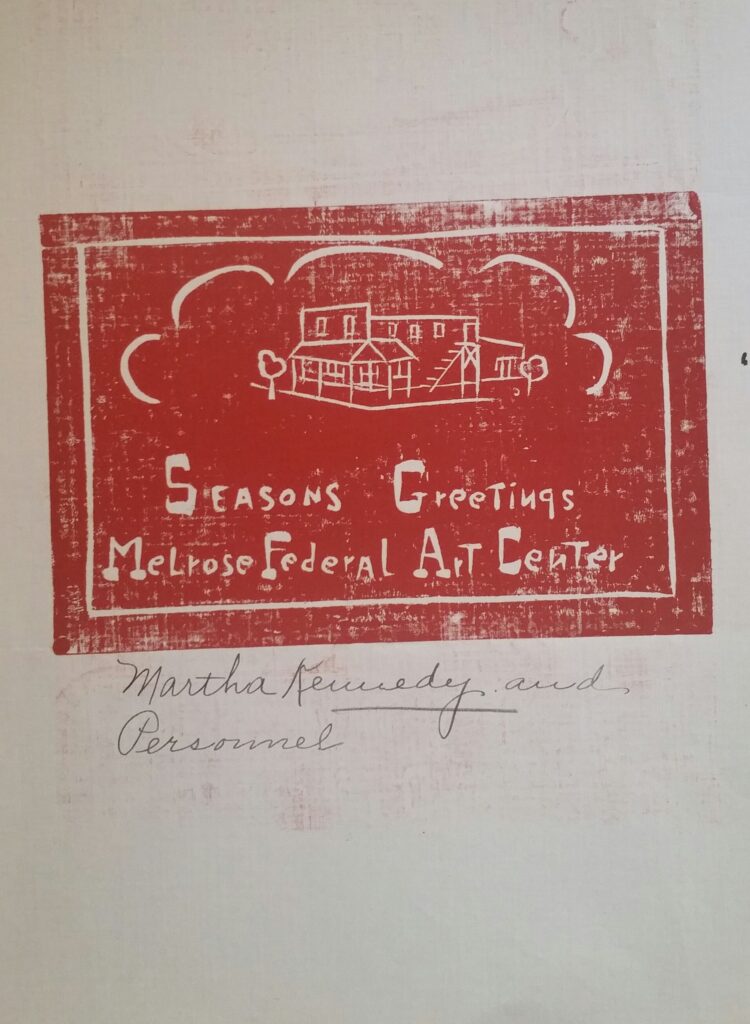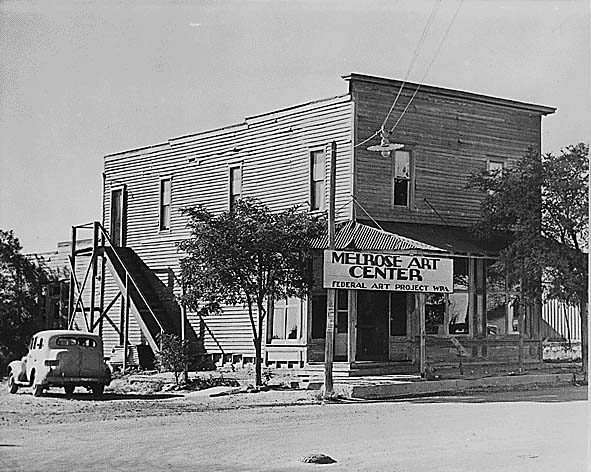This first month of the new year has been spent organizing for the year of research and writing to come. Partly it’s because I’m playing catch-up from December. Due to our recent move and the projects we needed to complete along with it, I didn’t do any dissertation work last month. But the new year is also an opportunity to reflect on past practices, make some new habits, and take a look at old research with fresh eyes while planning future archival deep dives.

The first thing I did was schedule a research trip to New York in early March, where I can finally look at the archives for the Neighborhood Exhibition Program. I was originally planning on a February visit, but given the current activity with the omicron variant, the Met archivists and I figured I’d have a better chance of carrying out my research trip if we waited until closer to the spring. In anticipation for that visit, I’ll be reading through the documents that have already been digitized.

I’ve also been reorganizing some of my current archival research. Last year I downloaded Tropy, a tool used for organizing photographs taken in archives, and used it to sort out the pictures I had taken from more recent archival visits. These included the Mildred Holzhauer Papers at the Archives of American Art, the Middlesex County Museum, and the Greenville Museum of Art. Unfortunately, when I transferred all my files to my new computer, the Tropy information didn’t carry over, so I had to re-enter it (I know there was a way around it but based on conversations with other Tropy users it would have taken as much or more time). This month I finally got the data resorted, and it actually didn’t take very long because I’d already gone through the trial and error of learning how to use Tropy to fit my needs. What had originally taken a month, then, was sorted within a week.

Most significantly, I finally exported my Roswell photos into Tropy, a project I’d been putting off for a couple of years. The main reason why I hadn’t gotten around to it was that I had already devised my own organization system in Google Drive, and knew how to find what I needed. Yet as efficient as this system may be, I also wanted to keep all my archival photos organized in one place. I felt this was especially important with the Roswell files. Up to this point, I’d kept them separate from my other data, and as a result I tended to think of it as an exceptional case study. But my objective isn’t to see Roswell as a unique or isolated case. I needed my data organization to show Roswell as part of a larger system of projects rather than a solitary case stored in its own drive.
So this past week, I finally imported those photos and sorted them out. What I’ve learned through the process has been illuminating, from the sheer number of documents in Roswell compared to the other sites, to the quantity of files and images I still need to go through. And this doesn’t even include the folders upon folders of correspondence, which I summarized in Google docs rather than photograph due to their quantity. Uploading these files to Tropy has reminded me how much there is to work with, but it’s also got me excited for the opportunities to note crossovers and connections between art centers. I already know of at least one exhibition that was shown at both Roswell and Greenville, for instance. Working through Tropy, I hope to recognize more points of intersection.
Indeed, reorganizing my data has helped me reframe my interests in the archival record of the Community Art Center Project by refocusing my attention on the centers that are mentioned but don’t have their own designated repository. The Mildred Holzhauer papers, for instance, mention a lot of art centers active in Florida, sites that have long since become inactive. Similarly, the exhibit schedules preserved at the Greenville Museum of Art include references to other centers in North Carolina, sites that were robust and vibrant in their time but have long been inactive.
But the one that has been sticking in my mind the most is the Melrose Art Center. Located about an hour from Roswell in a town with a population of about 600 people (that holds true today, by the way), the Melrose Art Center opened around the same time as Roswell, give or take a year, and as far as I can tell closed during World War II. At first consideration, it seems to have vanished from the cultural landscape. The storefront that hosted it is long gone, and there is no archive dedicated exclusively to it. When I asked the Historical Society for Southeast New Mexico whether it had any records of it, they couldn’t find any.

And yet the Art Center does remain within the archival record through its presence in other repositories. It appears frequently in the Roswell Museum’s archive in the form of letters, exhibit schedules, and even Christmas cards. It regularly engaged the Roswell Museum through sharing exhibitions and trading materials for craft projects, and at least one Roswell director expressed envy at its visitation numbers. Nor is its archival presence limited to the Roswell Museum. Photographs of the site appear in the Mildred Holzhauer papers, for instance, and the papers of Holger Cahill, director of the FAP itself, include references to the site.
To me, it’s fascinating how an art center located in the middle of rural southeastern New Mexico can appear in different archival repositories around the country. Given the art center’s ultimate disappearance from the built environment and the absence of details regarding its exact closure, it’s got an air of mystery that appeals to the inner detective. On the level of archival theory, it makes me think about archives as models for networks rather than sedentary collections, and makes me wonder what it would mean for research if we thought about archives as connections rather than collections of documents dedicated to a specific topic. I doubt I’ll have time to get into Melrose that deeply, but I think there is the potential for a journal article, one that would let me focus on this specific center and its history as indirectly conveyed through other archives. Doing that would potentially let me address this interest while keeping the dissertation focused on my bigger questions about art access and mobility.
But the art centers, Melrose and the others, are for future chapters. I wanted to get this data organized before the semester started, but now that they’ve been put in their places, it’s time to shift gears back to Chapter Two and the Neighborhood Exhibition Program.
